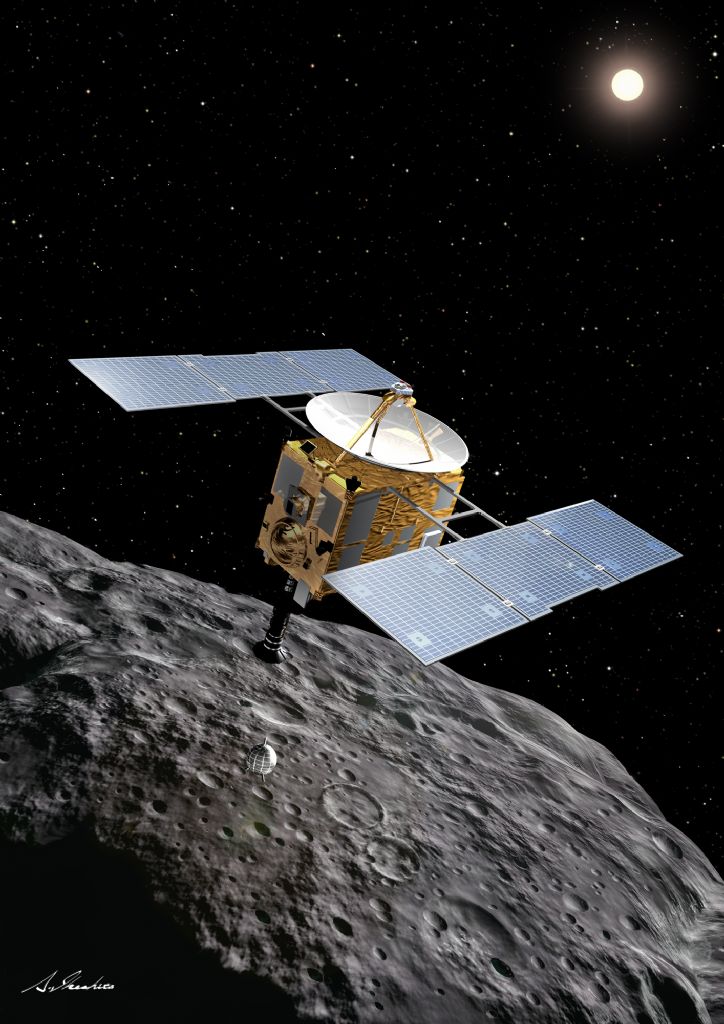
June 13, HAYABUSA, a Japanese asteroid explorer, came back to the earth from the asteroid named ITOKAWA after seven years of voyage. He (Hayabusa was supposed to be a boy) was launched in May 9, 2003, and landed Itokawa twice in November, 2005. After leaving the asteroid, he was suffering from many machine troubles, but, at last, he has reached the atmosphere of the earth, delivered a small capsule which contains sands collected from the surface of the asteroid, and burned out into the air.
In 1957, when I was nine years old, SPUTNIK, a Russian artificial satellite, succeeded. It was a great topic between boys, and I decided to be a rocket engineer. I did not want to be an astronaut, but an engineer who made rockets which went to other planets. I feel I am doing the same kind of job now. I help people to go to their own places.
At that time, Dr. Hideo Itokawa, a pioneer of Japanese rocket engineering, wrote many articles for children. In 1955, he succeeded the experiment of “Pencil Rockets”, which are tiny rockets with 23 cm long. He was so ambitious a person that he designed the project as if he launched a big rocket. He prepared many teams of development and launching for 23 cm long rickets! The same structure of organization is adopted still now in Hayabusa and other spaceship projects.
Surprising to say, the arrival of Hayabusa did not relay from the spot on TV. He was burning out above a desert in Australia. A Japanese TV company dispatched a team there, but the film was broadcasted on the next day. Then, what was provided on TV when Hayabusa showed us his last greeting to the mankind? Football! Can you believe? FIFA World Cup was reported, furthermore, it was not a game of the Japanese team.
I might be paranoiac, but there must be some political pressure from the government. The Democratic Party cut budget for scientific research this spring. There are two institutions for space development; ISAS and NASDA. ISAS, the Institute of Space and Astronautical Science, is settled purely for scientific research, while NASDA, the National Space Development Agency of Japan, is for practical use of space science. Hayabusa was executed by ISAS, whose budget was cut off severely. If people are proud of the success of Hayabusa, it must be very unfavorable to the politicians.

